
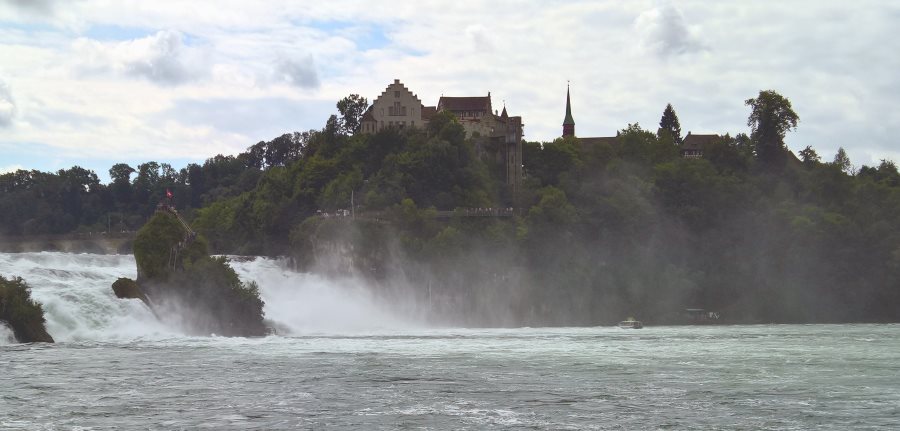 Schaffhausen is a beautiful city with a vault cellar right in the city center. Located right next to the train station starts the inner city of Schaffhausen. In addition to cusps, old buildings and their facades, the old facility Munot located right next to the Rhine Fall which offers a secret highlight.
Schaffhausen is a beautiful city with a vault cellar right in the city center. Located right next to the train station starts the inner city of Schaffhausen. In addition to cusps, old buildings and their facades, the old facility Munot located right next to the Rhine Fall which offers a secret highlight.
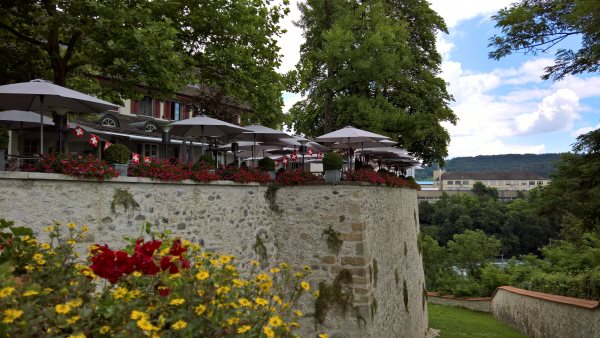 The Rhine Fall isn't the only worth-while thing here. Schaffhausen itself is a very beautiful city with sights and some surprises! Cross one street directly from the train station and you're in the city center. Beautiful, well-preserved buildings, bay windows, and facades characterize the overall image of the city center. In addition to numerous shops, there are also a few restaurants, bars and cafes to unwind from the hustle and bustle.
The Rhine Fall isn't the only worth-while thing here. Schaffhausen itself is a very beautiful city with sights and some surprises! Cross one street directly from the train station and you're in the city center. Beautiful, well-preserved buildings, bay windows, and facades characterize the overall image of the city center. In addition to numerous shops, there are also a few restaurants, bars and cafes to unwind from the hustle and bustle.
Having arrived at the market square with its fountain, we leave the town center behind us and go to an old monastery where we can admire the freely-accessible courtyards. There you can enjoy the peace amongst the wealth of greenery and an herb garden. But don't stay too long - there's a great city to explore.
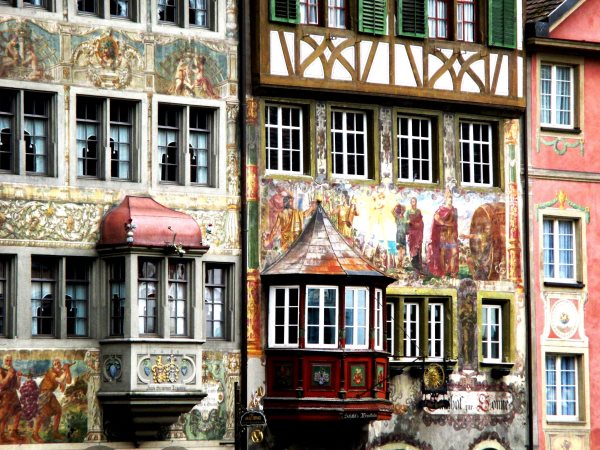 Situated on a hill is s the city's landmark, Munot. Dating back to the 16th century, it is a large, round building with a tower directly in the center of town. Nowadays it serves as a venue for theater performances and concerts. We now walk up the many steps through the vines, pass through the entrance gate and are overwhelmed. We would never have expected such a large vaulted cellar up here! Nine huge columns bear the vaulted cellar. Sunlight penetrates from above through the light shafts. The sight and the pleasant coolness in the summer lets us linger here longer. After a short breather, we head into the tower which includes the spiral-shaped path upwards without stairs. At the top is a large area with a small stage, seating, free drinking water from a tap, and even free toilets. All of this add to the magnificent view of Schaffhausen and the surrounding area.
Situated on a hill is s the city's landmark, Munot. Dating back to the 16th century, it is a large, round building with a tower directly in the center of town. Nowadays it serves as a venue for theater performances and concerts. We now walk up the many steps through the vines, pass through the entrance gate and are overwhelmed. We would never have expected such a large vaulted cellar up here! Nine huge columns bear the vaulted cellar. Sunlight penetrates from above through the light shafts. The sight and the pleasant coolness in the summer lets us linger here longer. After a short breather, we head into the tower which includes the spiral-shaped path upwards without stairs. At the top is a large area with a small stage, seating, free drinking water from a tap, and even free toilets. All of this add to the magnificent view of Schaffhausen and the surrounding area.
We descend down the other side of the mountain. After crossing the castle moat and passing the Rosengarten to the right and a game trail to the left, we return to the city. At the train station, we finally take the bus and drive a few stops down to the Rhine Fall which should not be omitted!
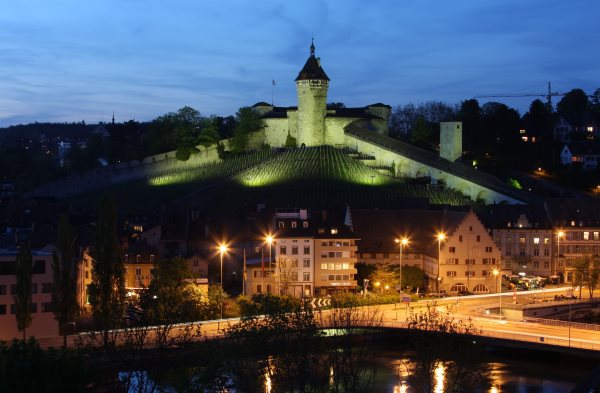 Being limited on time, we realized Schaffhausen has so much to offer. A perfect starting point to experience Schaffhausen and the sights is the Arcona Living Hotel conveniently located right next to the train station.
Being limited on time, we realized Schaffhausen has so much to offer. A perfect starting point to experience Schaffhausen and the sights is the Arcona Living Hotel conveniently located right next to the train station.
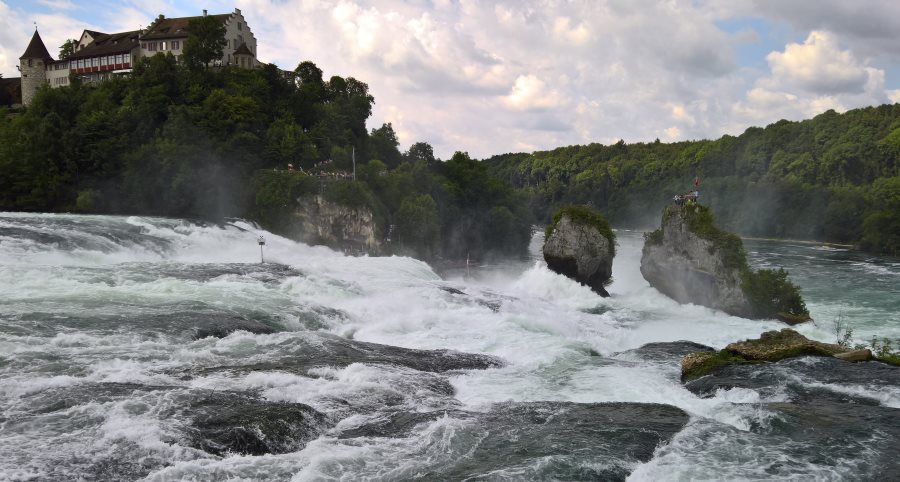 Rhine Fall is a year-round, freely-accessible attraction; be sure to check opening hours, as they can change with the season.
Rhine Fall is a year-round, freely-accessible attraction; be sure to check opening hours, as they can change with the season.
Rhine Fall Schaffhausen opening hours and prices: http://www.rheinfall.ch/en
After the Rhine has left Lake Constance, it rushes through the heights of Schaffhausen with a loud noise and white spray over rugged rock faces down the edges. Platforms and ships transport delighted visitors by the masses to experience the largest waterfall in Europe.
How to Get There:
If you only visit is to Rhine fall, there is paid parking for you. But if you are already here, you should also visit Schaffhausen with its local sights and beautiful city center. If traveling into the city, we recommend to park right in the city right at the train station. The underground garage may cost more relative to where you are, but the Rhine Fall will only be minutes by bus or train. After a city stroll, you'll certainly be glad to have your car just around the corner - if only to drop off your shopping bags.
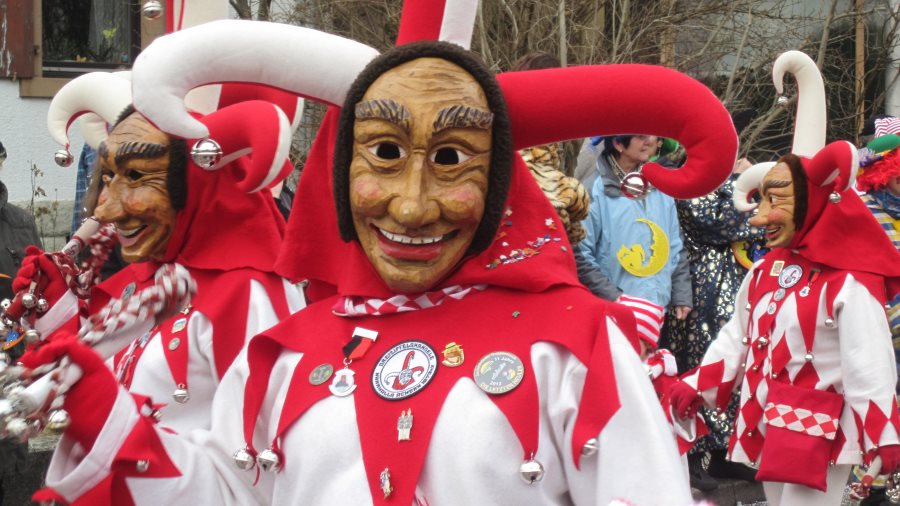 I'm sure you've all heard of Mardi Gras in New Orleans or Carnival in Venice, and well, Fasching is Germany's Mardi Gras or Carnival. It officially began on 11.11.11 – meaning, the 11th of November (the 11th Month) at 11:11 AM, 2016, and it will end at the stroke of midnight on Fat Tuesday (or Shrove Tuesday, the day before Ash Wednesday) aka February 28th 2017. It, like many other holidays, festivities, and traditions, is based in religion as a celebration before lent and it has its roots in Catholicism and Christianity. However, it is now celebrated in many regions of Germany and by all walks of life. It has become a tradition in Germany that no longer centers around religion. Anyone who attends a Fasching party or parade will tell you that it certainly doesn't feel like it's centered around the church. It's a colorful celebration of life, with costumes, parties, drinks, dancing, music, comedy, candy and more.
I'm sure you've all heard of Mardi Gras in New Orleans or Carnival in Venice, and well, Fasching is Germany's Mardi Gras or Carnival. It officially began on 11.11.11 – meaning, the 11th of November (the 11th Month) at 11:11 AM, 2016, and it will end at the stroke of midnight on Fat Tuesday (or Shrove Tuesday, the day before Ash Wednesday) aka February 28th 2017. It, like many other holidays, festivities, and traditions, is based in religion as a celebration before lent and it has its roots in Catholicism and Christianity. However, it is now celebrated in many regions of Germany and by all walks of life. It has become a tradition in Germany that no longer centers around religion. Anyone who attends a Fasching party or parade will tell you that it certainly doesn't feel like it's centered around the church. It's a colorful celebration of life, with costumes, parties, drinks, dancing, music, comedy, candy and more.
Most towns and major cities in Germany celebrate Fasching, with the same kind of enthusiasm that we reserve for Halloween in the United States—but the traditions and history behind Fasching vary from region to region. In some areas people dress up in scary costumes and they try to “scare off the winter,” and in other regions you are meant to dress silly, not scary, but no matter where you go, you're sure to find a wonderful celebration. As you may have noticed, Fasching celebrations are a little slow to start, mostly since the focus in November and December is on Christmas, however, things really start to pick up at the end of January and the beginning of February, and soon you'll see various costumes for sale. Even if you don't plan on partaking in the festivities, now might be a good time to grab a fun Halloween costume for October.
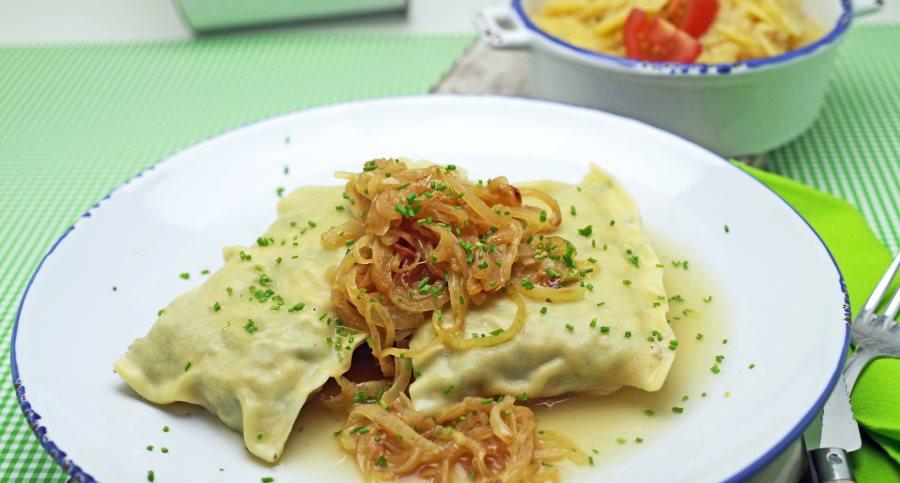
Ingredients for the broth:
|
Ingredients for the Maultaschen:
For filling:
|
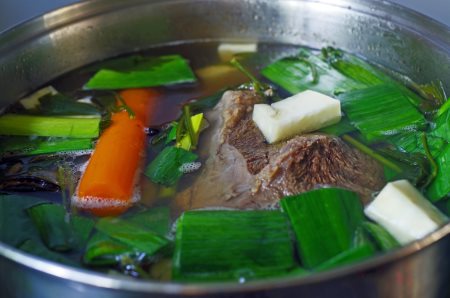 Blanch chopped beef soup bones and beef strips with hot water, then drain the hot water. Rinse bones and beef strips under running cold water. Add bones, bay leaves, juniper berries, and browned onions to a large saucepan with cold water. Let the stock simmer for about an hour.
Blanch chopped beef soup bones and beef strips with hot water, then drain the hot water. Rinse bones and beef strips under running cold water. Add bones, bay leaves, juniper berries, and browned onions to a large saucepan with cold water. Let the stock simmer for about an hour.
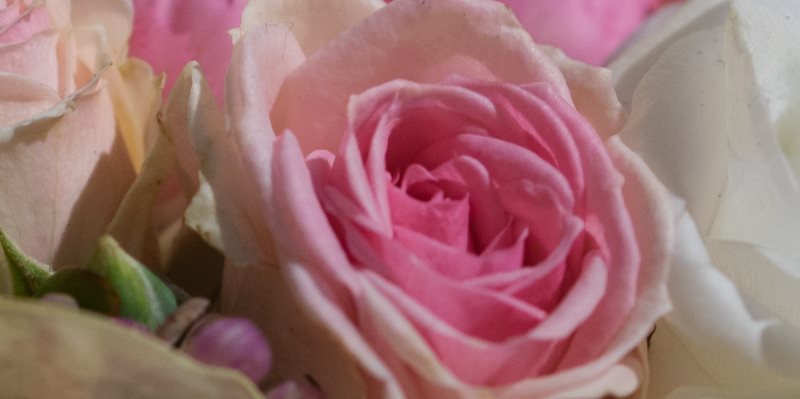 Though celebrating Valentine's Day has only become popular within the last few decades in Germany, there are several traditions the Germans have taken on whole-heartedly. This includes giving cards, sweet treats and flowers to their loved ones on this special day.
Though celebrating Valentine's Day has only become popular within the last few decades in Germany, there are several traditions the Germans have taken on whole-heartedly. This includes giving cards, sweet treats and flowers to their loved ones on this special day.
The origins of both the man known as Valentinus and the celebration itself are obscure. Little is known about the Roman (or Romans) who may have been a bishop in Terni or a priest in Rome. Although several legends have arisen around the Christian martyr Valentinus, there is no historical evidence that connects him to lovers or today's Feb. 14 Valentine celebration. As in the case of other Christian celebrations, Valentine's Day is more likely based on the pagan Roman fertility festival called Lupercalia that took place in mid-February. The Lupercalia only ended in 495 when it was banned by the Pope.
Copyright Together Magazine by Uwe Warnack © 2024
Designed with by pixagentur